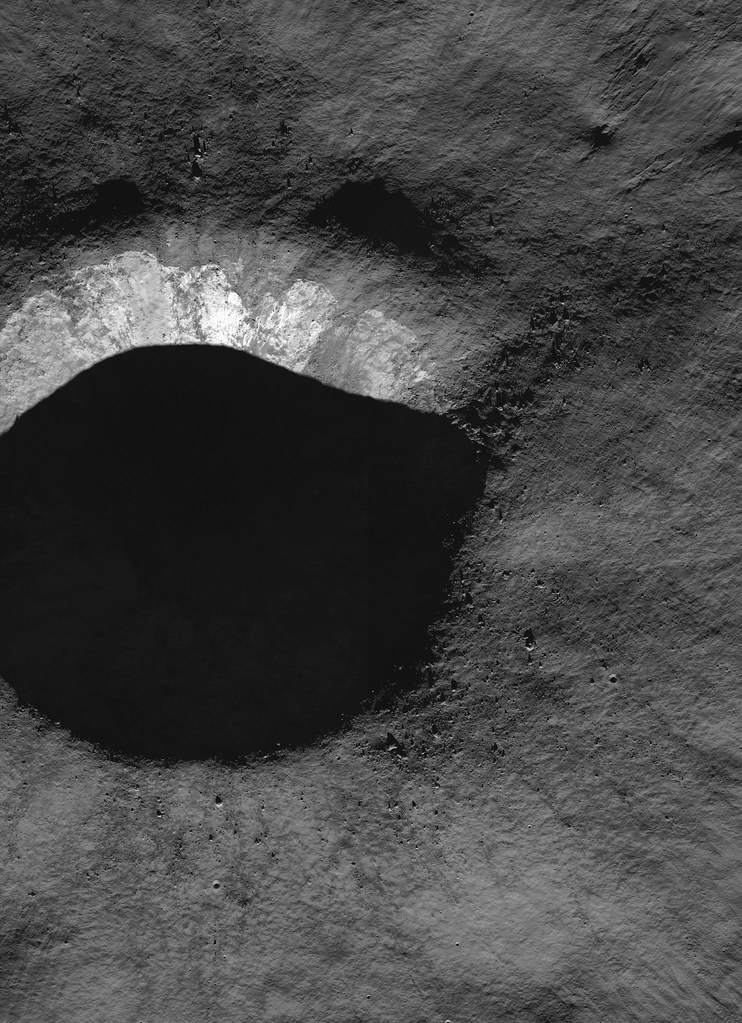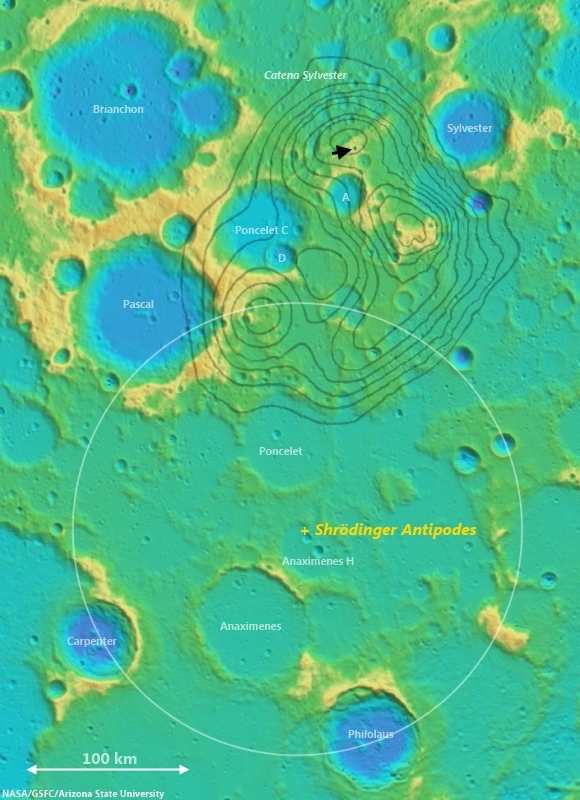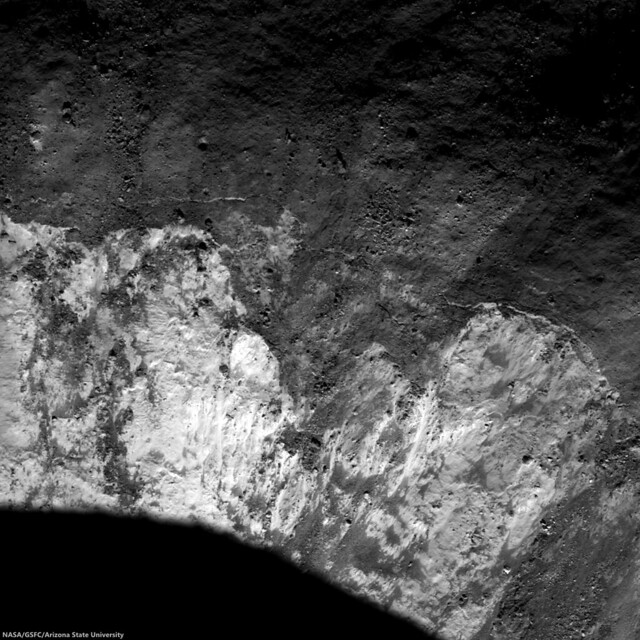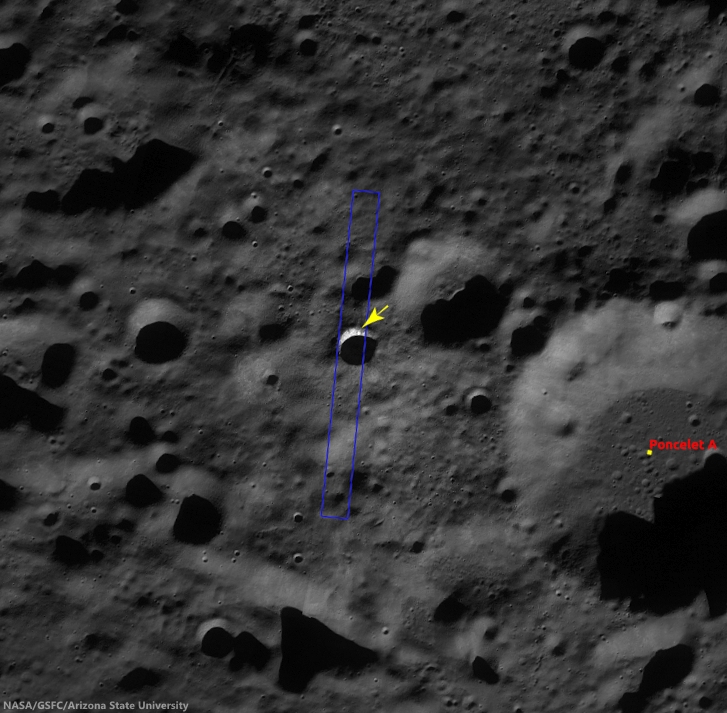Hiroyuki Sato
LROC News System
After the unimaginably violent processes of excavation and ejecta emplacement, impact craters gradually change their shapes with time by various processes, such as the isostatic rebound, mass wasting, subsequent impacts, and space weathering.
Today's Featured Image highlights such a post-impact degradation process.
The lower half of this image (relatively high reflectance) is the crater wall, downslope is to the bottom. The bottom-left dark area is the shadow of southern crater rim. Upper half of the image with a low reflectance surface is the crater rim and the rim slope out of the cavity, mostly covered with impact melt. The low reflectance area at the image center just above the steep wall has multiple horizontal cracks showing where the hardened impact melt has cracked as the steep walls slowly fail and slide into the crater bit-by-bit. These slope failures continuously refresh the crater walls, removing the melt coatings and exposing subsurface materials.
LROC News System
After the unimaginably violent processes of excavation and ejecta emplacement, impact craters gradually change their shapes with time by various processes, such as the isostatic rebound, mass wasting, subsequent impacts, and space weathering.
Today's Featured Image highlights such a post-impact degradation process.
 |
| Full-width mosaic of the LROC NAC observation from orbit 3574. The full-sized (4581 x 6319) original can be viewed HERE. Though the high-angle of illumination at this high latitude favors outlines of topography over intrinsic brightness and color, relatively darker and lighter materials radiate over great distances, aiding studies of how younger materials interact with anomalous local magnetism [NASA/GSFC/Arizona State University]. |
 |
| Arrow marks the young crater highlighted in the LROC Featured Image, released March 25, 2014, west of Poncelet C. The white circle is an approximate reflection of the parameters of the Schrödinger impact basin, the Moon's youngest, centered on a point on the diametrically opposite (antipodal) side of the Moon from the center of Schrödinger, in the far south. Grey lines outline nodes of anomalous crustal magnetism teased from Lunar Prospector (1998-99) data. Noted planetary scientists Lon Hood and Paul Spudis use the excavation caused by the smaller impact to aid in determining how local topography may have been disrupted, as they have suggested, by the force of the Schrödinger basin-forming impact. One challenge will be to determine how much the comparatively weak crustal magnetism interacts with migrating dust and fresh impact debris to create albedo swirl features [NASA/GSFC/Arizona State University]. |
Related Posts:
The Moon's antipodal magnetism mystery
Lunar swirl phenomena from LRO
Slope failure near Aratus crater
Sinuous Cracks
Slope Resurfacing
Stratified Ejecta Blocks
Dark Impact Melt Sheet
Thin Dark Layer




No comments:
Post a Comment
Welcome, Lunatics!